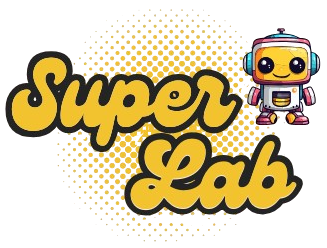Table of Contents
Introduction
Optimize Your Social Media Audience Insights with AI – In today’s digital age, social media platforms have become a bustling hub of activity, where millions of users interact, share, and express their opinions daily. For businesses and content creators, understanding this vast audience is crucial. But how can one make sense of the endless stream of data? Enter AI analytics—a powerful tool that can transform raw data into meaningful insights. In this article, we’ll explore how AI analytics can help you understand your social media audience better.

The Role of AI in Social Media Analytics
AI analytics involves using artificial intelligence to analyze data and extract valuable insights. This technology can process vast amounts of information quickly and accurately, making it an invaluable asset for understanding social media audiences.
How AI Processes Social Media Data
AI algorithms can sift through social media data to identify patterns and trends. Here’s how it works:
- Data Collection: AI tools gather data from various social media platforms, including posts, comments, likes, shares, and more.
- Data Analysis: The collected data is then analyzed to identify patterns, such as trending topics, user sentiment, and engagement levels.
- Insight Generation: AI generates insights based on the analysis, helping businesses understand their audience’s preferences and behaviors.
- Optimize Your Social Media Audience Insights with AI
“AI analytics can transform raw social media data into actionable insights, enabling businesses to make informed decisions.”

Benefits of Using AI Analytics for Social Media
AI analytics offers several advantages for businesses looking to understand their social media audience:
Enhanced Audience Segmentation
AI can segment your audience based on various factors, such as demographics, interests, and online behavior. This allows for more targeted marketing strategies.
- Personalized Content: By understanding different audience segments, businesses can create personalized content that resonates with each group.
- Improved Engagement: Targeted content is more likely to engage users, leading to higher interaction rates.
- Optimize Your Social Media Audience Insights with AI
Real-Time Insights
One of the standout features of AI analytics is its ability to provide real-time insights. This means businesses can respond to trends and changes in audience behavior as they happen.
- Timely Responses: With real-time data, businesses can quickly address customer concerns or capitalize on trending topics.
- Adaptive Strategies: Real-time insights allow for agile marketing strategies that can adapt to changing audience preferences.
- Optimize Your Social Media Audience Insights with AI
Predictive Analytics
AI can also predict future trends and behaviors based on historical data. This predictive capability is invaluable for planning long-term strategies.
- Forecasting Trends: Businesses can anticipate upcoming trends and prepare accordingly.
- Resource Allocation: Predictive analytics helps in allocating resources efficiently, ensuring efforts are focused on high-impact areas.
- Optimize Your Social Media Audience Insights with AI

Real-World Applications of AI Analytics in Social Media
To illustrate the power of AI analytics, let’s look at some real-world applications:
Case Study: A Fashion Brand’s Success
A well-known fashion brand used AI analytics to understand its social media audience better. By analyzing engagement data, the brand identified a growing interest in sustainable fashion. This insight led to the launch of a successful eco-friendly clothing line, which resonated with their audience and boosted sales. Optimize Your Social Media Audience Insights with AI.
Example: A Local Restaurant’s Strategy
A local restaurant used AI analytics to monitor customer reviews and feedback on social media. By identifying common complaints about service speed, the restaurant implemented changes that improved customer satisfaction and increased positive reviews.

Challenges and Considerations
While AI analytics offers numerous benefits, there are also challenges to consider:
Data Privacy Concerns
With the increasing focus on data privacy, businesses must ensure they comply with regulations when using AI analytics.
- Transparency: Be transparent with users about data collection practices.
- Compliance: Adhere to data protection laws, such as GDPR, to avoid legal issues.
- Optimize Your Social Media Audience Insights with AI
Interpreting AI Insights
AI provides data-driven insights, but human interpretation is still crucial. Businesses need skilled analysts to make sense of the data and apply it effectively.
- Human Expertise: Combine AI insights with human expertise for the best results.
- Continuous Learning: Stay updated with AI advancements to leverage new capabilities.
- Optimize Your Social Media Audience Insights with AI

Conclusion: Optimize Your Social Media Audience Insights with AI
AI analytics is a game-changer for understanding social media audiences. By providing detailed insights into audience behavior, preferences, and trends, AI empowers businesses to make informed decisions and craft effective marketing strategies. As technology continues to evolve, the potential for AI analytics in social media will only grow, offering even more opportunities to connect with audiences in meaningful ways. Optimize Your Social Media Audience Insights with AI.
Incorporating AI analytics into your social media strategy can seem daunting, but the benefits far outweigh the challenges. By embracing this technology, you can gain a deeper understanding of your audience and stay ahead in the ever-changing digital landscape.
Frequently Asked Questions (FAQ’s) About Optimize Your Social Media Audience Insights with AI
What is AI analytics in social media?
AI analytics uses machine‐learning algorithms and natural language processing to gather, process, and interpret vast amounts of social media data—such as posts, comments, likes, shares, and follower behavior—and turn it into actionable insights. Optimize Your Social Media Audience Insights with AI.
How does AI collect social media data?
AI tools integrate with platform APIs or scraping services to aggregate data across channels (e.g., Facebook, Instagram, Twitter). They capture both quantitative metrics (likes, shares) and qualitative content (text, images). Optimize Your Social Media Audience Insights with AI.
What kinds of patterns can AI detect?
AI can uncover trending topics, sentiment shifts, peak engagement times, audience demographics, content‐format preferences, and emerging subsegments within your follower base.
Why is audience segmentation important?
Breaking your audience into segments—by age, location, interests, purchase intent, etc.—allows you to tailor messaging and offers, boosting relevance and engagement. Optimize Your Social Media Audience Insights with AI.
How does AI improve audience segmentation?
Unlike manual tagging, AI analyzes dozens of variables simultaneously, dynamically grouping users based on behavior and affinities you may not even have considered.

What is sentiment analysis?
Sentiment analysis uses AI to classify social media mentions as positive, negative, or neutral. This helps you gauge public perception of your brand, products, or campaigns in real time.
Can AI identify the best time to post?
Yes. By analyzing when your followers are most active and engaged, AI pinpoints optimal posting windows to maximize reach and interaction.
How do real-time insights benefit my strategy?
With real-time alerts on trending hashtags, spikes in mentions, or sudden sentiment changes, you can swiftly pivot messaging, launch micro-campaigns, or address issues before they escalate.
What is predictive analytics?
Predictive analytics leverages historical data to forecast future trends—such as which topics will gain traction or which content formats will drive engagement—helping you plan ahead.
How accurate are AI predictions?
Accuracy depends on data quality and volume; with sufficient historical data, many AI platforms achieve high levels of precision (often above 80–90% for trend forecasting).







